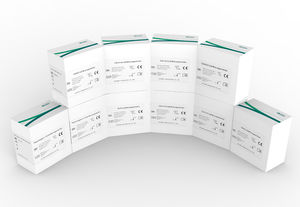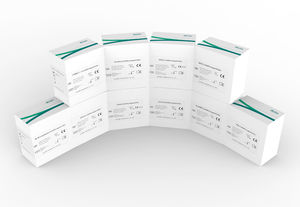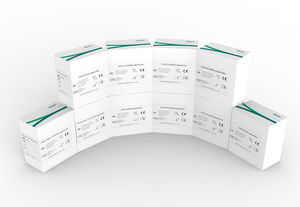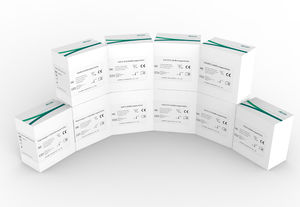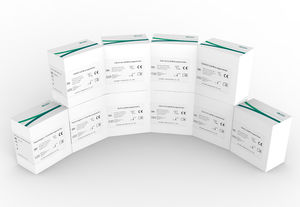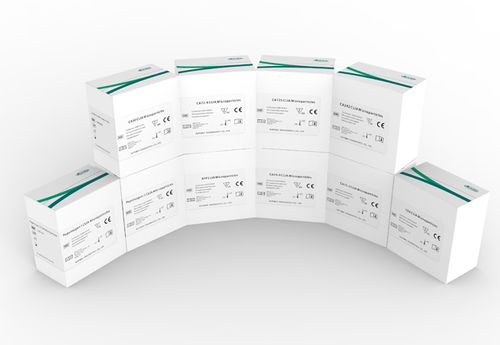
- Laboratory
- Laboratory medicine
- Colon cancer test kit
- Autobio Diagnostics
Colorectal cancer test kit CMB0202oncologyCEAclinical
Add to favorites
Compare this product
Characteristics
- Applications
- colorectal cancer
- Application field
- oncology
- Tested parameter
- CEA
- Sample type
- clinical, serum, cell
- Sample volume
0.025 ml
(0.00085 US fl oz)
Description
Colorectal cancer (CRC) is one of the most prevalent types of cancer, ranking as the third most common malignancy and the fourth leading cause of cancer deaths worldwide.[1]A wide range of serum tumor biomarkers, including CA19-9, CA242, CA72-4, CA50, and CA125, has been studied in association with colorectal cancer (CRC).[2]CEA and CA19-9 are the two most common tumor markers for colorectal cancer that are currently utilized clinically.[3]CA50 and CA724 could supplement CEA in monitoring recurrence and metastasis.CA125 represents a significant and independent prognostic factor in CRC patients, superior to CEA.[2]
Clinical Significance
Simultaneous use of the two markers is useful in evaluating the therapeutic effect and monitoring the recurrence of advanced colorectal cancer. [3]
ThereisapossibilityofusingCA242in monitoringdiseasestatusforpatientswithcolorectal cancer, being useful in differentiating benign vs. malignant disease as well as metastatic vs. non-metastatic cancer.[5]
CA50 is a glycolipid antigen that plays an important role in cell growth and differentiation. Subgroup analyses indicated that CA50 was the only tumor biomarker that was significantly correlated with long-term survival in CEA-normal CRC patients.[2]
CA125 concentration seems to be a better tumor marker than CEA concentration for predicting PD in CRC in both men and women. This finding suggests that CA125 concentration should be measured as part of the pretreatment evaluation.[6]
Combined serum markers can be used to not only diagnose colorectal cancer, but also appraise the tumor status for guiding treatment, evaluation of curative effect, and prognosis of patients.[4]
Catalogs
No catalogs are available for this product.
See all of Autobio Diagnostics‘s catalogsRelated Searches
- Autobio test kit
- Solution reagent kit
- Autobio blood test kit
- Autobio serum test kit
- Plasma assay kit
- Infectious disease detection kit
- Diagnostic reagent kit
- Respiratory infection test kit
- Autobio clinical test kit
- COVID-19 detection kit
- Clinical chemistry analyzer
- Antigen assay kit
- Bacteria reagent kit
- Automatic clinical chemistry analyzer
- Autobio cancer test kit
- Clinical reagent kit
- Benchtop clinical chemistry analyzer
- IgG test kit
- Laboratory detection kit
- Autobio cell test kit
*Prices are pre-tax. They exclude delivery charges and customs duties and do not include additional charges for installation or activation options. Prices are indicative only and may vary by country, with changes to the cost of raw materials and exchange rates.


